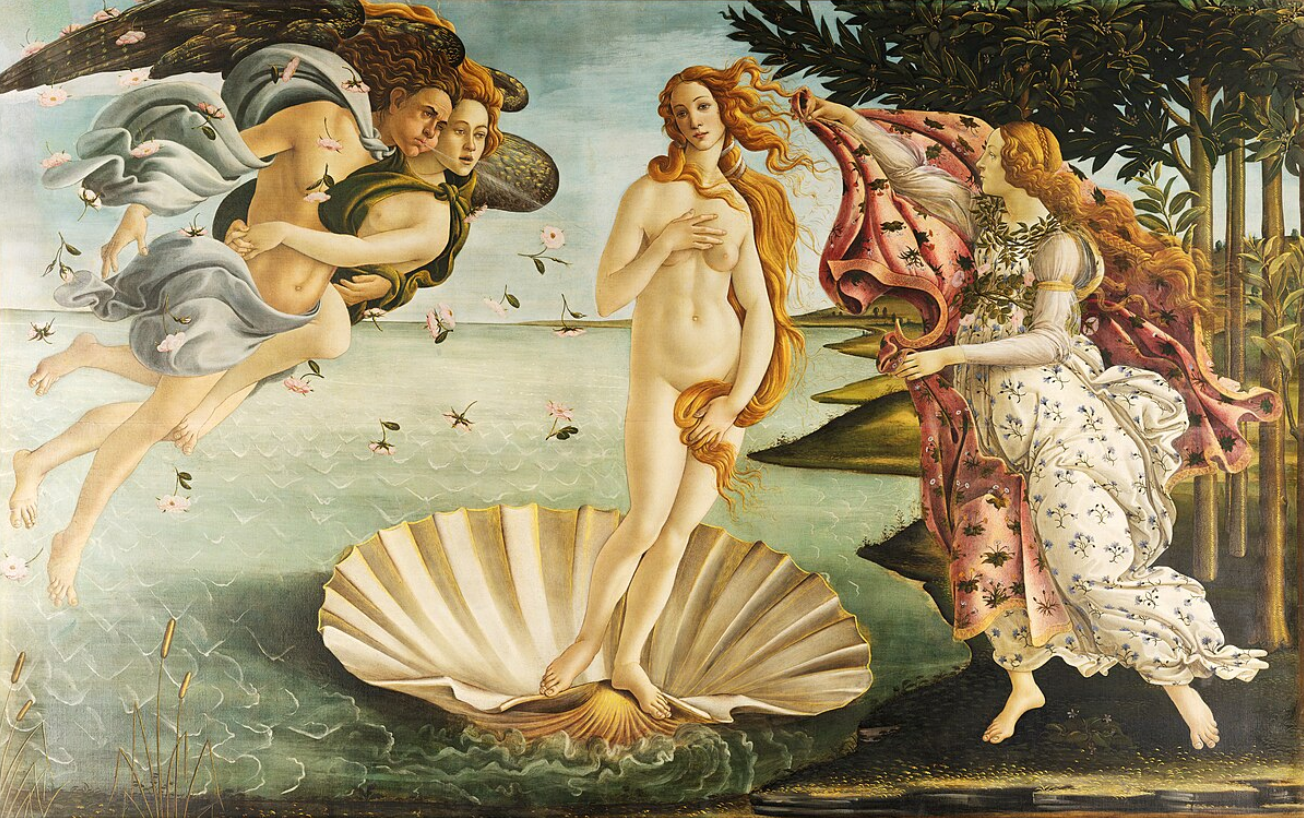Putting Together the Puzzle of Botticelli's Venus
Sandro Botticelli, The Birth of Venus (c. 1484–1486). Uffizi, Florence
Botticelli’s Birth of Venus is arguably one of the most iconic paintings in existence. Painted around 1485, the Birth of Venus was most likely commissioned for a wedding, ostensibly for a member of the Medici family due to their prominence in Florence, although the exact nature of the wedding is ambiguous. Botticelli’s wide sources for his painting range from that of ancient literature to ancient art, as well as contemporary Renaissance poetry from the Medici court poet Poliziano, who rewrote the Homeric Hymns to Aphrodite.
The painting depicts the goddess Venus naked, standing on a shell. To her left is a member of the Horae (hours), and to her right is Zephyrus and an unidentified female figure (perhaps Chloris, to be in keeping with Ovid’s Mythology represented in Botticelli’s previous painting the Primavera, but she could also be Aura - the personification of a breeze). The scene represents Venus’ birth, Zephyrus and the unknown female guiding Venus to the island of Cyprus, where the Horae waits for her with a covering.
Most notably, the posture of Venus is reminiscent of the Roman copies of statues of Aphrodite (variations on the Aphrodite of Knidos) with her modest pose covering herself. Interestingly, the pose is almost identical to that of the Capitoline Venus, although this cannot be the sculpture Botticelli saw as it hadn’t been discovered at the time. However, it is likely he saw something similar on his trips to Rome, as all the sculptures have common factors due to them being based on the Knidian Aphrodite. The style where the subject covers her form is commonly used in all of these Roman copies/variations, and is referred to as Venus Pudica - modest Venus. Botticelli however changes the context, from Venus bathing to that of her birth. Regardless, stylistically they are similar and the influence of the sculptural style is clear upon the painting.
Botticelli additionally merges ancient and contemporary literature to compose his own image through his Venus covering her lower half with her hair. In sculptures such as the Captioline Venus, Venus is covering her lower half with her hand, but in the painting she is using her hair to cover herself. Ancient epigrams such as those from Antipater of Sidon discuss Aphrodite wringing out her hair in regards to the lost Anadyomene of Apelles, while one of Botticelli’s contemporaries Poliziano, writes about Venus holding a bundle of her hair. Neither literary sources are used explicitly within the painting, rather they have been used as a guide for Botticelli alongside the sculptural, allowing for his own artistic interpretation of the Birth scene.
The Anadyomene of Apelles, although lost, can be argued as being a source that inspired Botticelli, through its literary descriptions (such as the epigram mentioned), but also its potential influences on later Roman painting at Pompeii. While Pompeii had not been discovered in Botticelli’s time, similarities between the Birth of Venus and the painting from the House of Venus in the Shell can be found - such as the inclusion of the shell itself which is absent from any ancient literature. Perhaps therefore the lost Anadyomene contained imagery of Aphrodite upon a shell, rising from the waves, or it could simply be explained as a coincidence. The shell, however, is mentioned by Poliziano as Venus’ method of transportation and therefore could further indicate the combination of Ancient and Renaissance sources used within the composition.
Venus’ landing on the Isle of Cyprus is detailed by Homer and by Hesiod, with the Horae offering her clothes consistent with that of the Homeric Hymn to Aphrodite. Hesiod also notes that when Aphrodite steps foot on the island, she fertilises the island with foliage, which can be suggested by the small number of trees and plants painted within the image. This also has interesting connotations considering the painting was commissioned within a marriage context. Therefore, Venus could be representing the bride moving towards her husband’s household (represented by the barren land/isle) where she will bring prosperity in the form of children (the flowers in which spring from Venus landing on Cyprus).
Ultimately, Botticelli was heavily influenced by ancient sources in his Birth of Venus, from subject matter to inclusion of other figures, but he used these sources to ground his painting in the classical, while also including contemporary poetry and his own interpretation of all of these sources to guide his composition.
Carmen Robinson is a recently graduated Classical Studies undergraduate with an interest in Ancient Greek Art/Material Culture and Religion.


